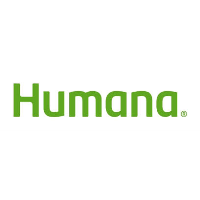Today's Accident Plans help employees manage growing financial risks of health care
By TJ Gibb, Segment Vice President
Accidents are inevitable and they come in many forms – from minor injuries to life changing events. In 2010, the most recent year this data was gathered, there were 29.3 million emergency department visits for accidents or unintentional injuries in the U.S. In today’s health care environment, even people with health coverage face significant and often-difficult health care expenses following a serious accident. Employers can help by offering an employee-paid accident benefit plan to provide funds at a difficult time. But not all accident plans are created equal. Employers need to understand the important differences to offer the best options to employees.
The right accident insurance can be a critical layer of financial protection for many employees. There are no copays or deductibles, and reimbursements are paid directly to the employee. Good plans provide benefit payments for qualified accidents from common injuries to major events or death due to an accident. Certain accident plans even cover travel and lodging, ambulance and hospitalization to provide additional value to the member. Accident plans can also give people the peace of mind they will need to visit a hospital or urgent care center as soon as an accident occurs instead of going without proper care for fear of a steep deductible. Good accident plans can even reduce fraudulent workers’ compensation claims.
It’s important that employers understand that there are big differences in the types of plans available today, and choosing the right accident plan is nearly as important as choosing the right medical plan.
In the old model of accident coverage, called flat rate plans, members are reimbursed based on a set schedule of benefits, meaning they are compensated based on a predetermined flat rate for a specific type of injury. For example, a laceration might lead to a $50 payment and a trip to the emergency room might yield $150 based on the plan’s schedule of benefits for that year, regardless of the severity of the injury or the employee’s actual expenses. This could leave the employee on the hook for a very large medical bill.
Today, full claim plans offer a more consumer-friendly approach by reimbursing based on the actual out-of-pocket expenses incurred by the member up to a designated policy maximum. For example, an employer may choose to offer employees two options – say $1,000 and $2,000 policies. Employees can then voluntarily choose the level of coverage that best fits their medical plan deductibles and individual circumstances. This gives the employee choices and assurance that their accident plan will cover their financial exposure in the event of a serious injury.
The direct-payment-to-the- consumer (employee) model of today’s full claim plans allows for a simpler reimbursement process, rather than the complicated benefit listings of flat rate plans. Full claim plans work much like a debit card. These plans are also typically more inclusive in terms of the types of accidents that are covered. Individuals enrolled in a full claim plan, such as Humana’s, will be reimbursed for actual medical charges up to the plan maximum for any qualified accident.
Employers should consider accident coverage options based on the value and financial security they offer employees, and they should fully understand how benefits are paid and in what amounts. Flat rate plans are often offered at lower premiums because they typically provide lower benefits. But it’s the old adage: you get what you pay for.
With the ever-present possibility of an accident and the fast-rising costs of health care forcing higher deductibles and copayments, it’s important that employers provide tools to employees to help them manage the growing financial risk. The right accident plan can play an important part in assuring employees’ financial health and peace of mind.
Humana
-
Ross McLerran Director of Public Relations/Marketing
- February 03, 2015
- (210) 617-1771
- Send Email

